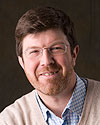11 Tesla as a springboard to the future
 |
| Giorgio Apollinari |
Giorgio Apollinari, head of the Technical Division, wrote this week’s column.
Fermilab achievements on the development of Niobium Tin (Nb3Sn) technology within the LHC Accelerator Research Program have already been illustrated in these columns. Thanks to a close collaboration between Fermilab, Brookhaven and Berkeley laboratories, the US magnet community leads the world in designing and building accelerator-worthy magnets with Nb3Sn. This technology allows accelerator magnets to achieve fields in excess of 10 Tesla (up to approximately 15 Tesla) in contrast to the Niobium Titanium (NbTi) technology currently used by the Tevatron and the LHC, where fields are limited to approximately 8 Tesla.
This Nb3Sn technology achievement has not gone unnoticed. Shortly after the LARP collaboration pushed past the technology boundaries for the construction of Nb3Sn accelerator magnets, a proposal was made to use Nb3Sn in the construction of 11 Tesla magnets for the LHC. These magnets will be used for an upgrade to the LHC. By installing these stronger and more compact magnets in a few locations around the LHC ring, there will be enough free space to insert collimators and achieve the LHC design luminosity of 1034 cm-2s-1 for the full exploration of the Energy Frontier.
There are close synergies between the Fermilab Nb3Sn program and the 11 Tesla magnets. The same equipment, tools, expertise and construction procedures that enabled LARP's successes, can be easily modified for the development of the 11 Tesla magnets. The Technical Division’s High Field Magnet group is constructing an 11 Tesla demonstrator model that we plan to complete by the end of the year. The successful demonstration of this model in 2011 will pave the way for a construction project with the goal of installing Nb3Sn magnets in an operating accelerator by 2016-2017 for a LHC shutdown.
In the longer term future, Nb3Sn magnets will form the basis for the LHC luminosity upgrade in the early part of the next decade, a possible higher energy LHC or the proposed Muon Collider at Fermilab.
In addition to advancing technology for particle accelerators, this technology also has many potential benefits for society. I believe things will play out in a way similar to what the Tevatron development did for the now-ubiquitous MRI technology (an industry with an annual business of approximately $3 billion a year in the US and $10 billion worldwide). I like to believe that thanks to our efforts today in a few decades we, as well as our children and grand-children, will be able to visit hospital with Nb3Sn-equipped MRI systems where the higher field achieved by these magnets could provide more detailed images, leading to improved medical diagnoses.
|